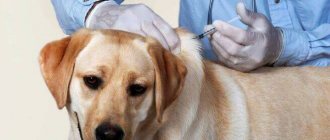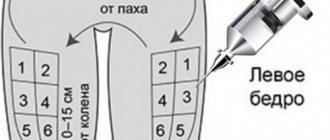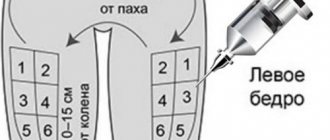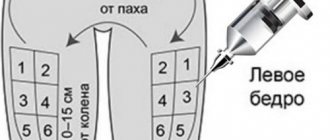Pets must be vaccinated in order to prevent the occurrence of diseases. It is especially important to vaccinate dogs because they regularly go outside and can easily become infected from other dogs. The veterinary clinic charges a considerable amount for this procedure, so people often want to buy the vaccine and give the injection themselves. Such a possibility exists, but you must first familiarize yourself with the vaccination schedule, as well as select a high-quality drug.
It is useful to consider how to vaccinate your dog yourself in order to understand the principle of action. It is important to carry out the procedure in a timely manner to protect the animal from the action of bacteria and viruses.
When should your dog be vaccinated?
In the first months after birth, the puppy is protected by the mother's immune system. The baby receives all the necessary antibodies along with her milk. But when the female finishes feeding him and he switches to feeding on his own, he will become vulnerable to external infections.
The first vaccination is recommended at 6–8 weeks after birth. Around this time, the puppy's maternal immunity begins to decrease. After 2–4 weeks, a second vaccination is carried out. Therefore, the vaccination schedule will be something like this:
- first vaccination: 6–8 weeks;
- second: 9–11 weeks;
- third: 12–14 weeks;
- fourth: 16–17 weeks;
- revaccination: 1 year.
Did you know? For some reason, vaccines induce “herd immunity.” This means that if the majority of individuals in a group are vaccinated, then others are less affected by the disease. There is no exact scientific explanation for this fact.
Then vaccinations are done once a year, annually. This is necessary to support the immune system of an adult dog. This scheme can be considered basic. It can be supplemented with vaccinations that are needed in a particular situation. For example, from ticks, if they are common, and you have a hunting dog that often comes into contact with the forest.
Any vaccine cannot be injected if the puppy:
- is ill;
- weakened after illness;
- not treated for worms;
- he has a high temperature.
It is important not to forget for good that the baby must be protected from dangerous diseases. And if for some reason the schedule shifts a little, then this is acceptable. Its exact observance is important only for pets that participate in exhibitions. The main reason is that most vaccinations have an expiration date. And if the injection was made less than 3 weeks before the event date and later than 11 months, you will not be able to cross the border or take part in the exhibition.
Animal vaccination prices
| Name | Price |
| Chipping | 1200 |
| Veterinary passport + registration | 200 |
| Nobivac DHPPI+L | 1500 |
| Nobivac DHPPI+LR | 1500 |
| Nobivac KS | 1500 |
| Nobivac R | 800 |
| Nobivac DP | 1500 |
| Nobivac Trio | 1500 |
| Nobivac Trio+R | 1500 |
| Purevax RCPCh | 1500 |
| Purevax RCPCh+Rabisin | 1500 |
| Rabisin | 800 |
| Eurikan DHPPI+ L | 1500 |
| Eurikan DHPPI+ LR | 1500 |
| Quadricate | 1500 |
| Kanigen DHA2PPIL | 1500 |
| Kanigen DHA2PPIL + Rabigen | 1500 |
| Rabigen | 800 |
| Feligen CRP | 1500 |
| Feligen CRP+Rabigen | 1500 |
| Felocel 4 | 1500 |
| Purevax FelV | 1500 |
| Felocel4+Defensor3 | 1500 |
| Defensor 3 | 800 |
How to prepare to vaccinate your dog at home
Is it possible to vaccinate a dog at home? The answer is ambiguous. Technically this is quite possible. And you do not violate any special sanitary requirements. But again, not for show pets. It is more difficult for them to document that vaccination was carried out.
The purchased vaccine must be stored in the refrigerator at a temperature of +2°C. It should not be frozen or stored at room temperature. Therefore, be sure to ask the pharmacy where you are making the purchase about the rules for storing it and the permissible period of use. Transport it home in a closed thermos with ice.
Important! Most dangerous diseases are difficult to cure, and the rabies virus is not only incurable, but is also transmitted to people.
What is needed for vaccination
To give an injection you need:
- syringe;
- vaccine.
Most of the drugs are presented as a dry active substance in one bottle and a solvent for it in the other. Immediately before the injection, the liquid is injected into a bottle with a dry substance, stirred and an injection is given.
A difficult issue is the choice of vaccine. There are quite a lot of them. Each pharmaceutical company that produces such drugs produces a line to cover all mandatory vaccinations or the most important ones. Monovalent vaccines are vials containing a weakened pathogen of only one disease. Polyvaccines are a kit designed to build immunity against several diseases. Polyvaccines combine from 2 to 6 different diseases. Thus, you need to choose a manufacturer and its line to complete the vaccination. But it most likely will not be possible to choose one drug from different companies.
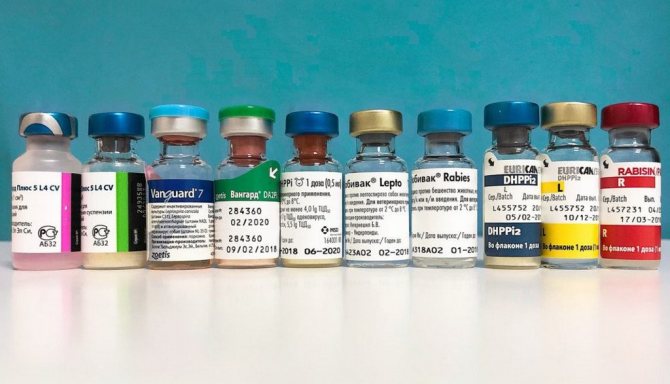
The table below presents several manufacturers and their lines of vaccination drugs. Try combining them if you know that it is necessary to vaccinate your puppy against the following diseases:
- canine plague (D);
- parovirus enteritis (P);
- parainfluenza (P);
- rabies (R);
- leptospirosis (L);
- infectious hepatitis (H or A2).
To help the buyer navigate the choice, next to the brand name in Latin letters, the manufacturer indicates the name of the disease from which this vaccine creates immunity.
| Manufacturer | Vaccines (cost per 1 bottle (RUB) |
| Nobivac (Netherlands) |
|
| Biovac (Russia) |
|
| Eurican (France) |
|
How to prepare a dog
Vaccinations are given only to healthy dogs. To be sure of this, you can get tested at a veterinary clinic. A general blood and urine test will show abnormalities if there is something wrong with the puppy. If it is discovered that he is sick, treatment will be prescribed, and the vaccination will be postponed until he recovers.
There are also a number of other mandatory activities that precede vaccination:
- 14 days before vaccination, flea treatment is carried out;
- It is necessary to treat the dog for worms within 10 days;
- feeding should take place no earlier than 12 hours before the procedure.
Important! Most often, diseases attack weakened pets, animals with reduced immunity and those living in difficult sanitary and hygienic conditions. At risk are puppies, pregnant bitches, and elderly individuals.
Plan your vaccination for the morning in the first half of the week. If it turns out that the puppy is allergic to the components of the vaccine, then he needs to get help quickly. Signs of allergy may appear within 1–2 hours after administration of the drug.
These include:
- swelling of the muzzle;
- labored breathing;
- hives;
- vomit;
- diarrhea.
It is also recommended to once again pay attention to the disadvantages of deciding to inject the vaccine at home:
- The drug may be stored in improper conditions prior to vaccination and may deteriorate. In this case, it is at least useless, and at maximum harmful.
- You risk missing and hitting a vein or nerve.
- It can be difficult to hold your pet and give the injection at the same time.
- The veterinarian may not agree to include a vaccination given at home in the dog’s passport. Be sure to clarify this nuance.

The most popular rabies vaccines
Vaccines for dogs against rabies are represented by drugs of domestic and foreign production. We offer a whole list of the most effective ones.
| Name | Manufacturer country |
| "Defensor 3" | "Zoetis Inc" USA |
| "Nobivak RL" | Intervet, Holland |
| "Rabizin" | Merial, France |
| "Rabikan" | FKP “Shchelkovo Biocombine”, Russia |
| "Biocan R" | Bioveta, Czech Republic |
| "Rabix" | Vetbiohim LLC, Russia |
Step-by-step instructions for vaccination
The vaccine for an adult dog can be from any manufacturer and in any configuration. The pet already has immunity and will quickly cope with processing the contents of the bottle on its own. But for a puppy it is better to use special medications that are supplied only by some manufacturers. This is due to the fact that his body cannot cope with a large number of hostile microorganisms and may not tolerate vaccination well.
Did you know? Vaccines are one of the oldest known medical methods of prevention. They were used in ancient China and India.
If you decide to vaccinate your dog yourself at home, then adhere to the following rules:
- Wear latex gloves and prepare the vaccine.
- To do this, heat the bottle with the solvent to the dog’s body temperature (+38°C). This can be done by holding it in your hands or placing it on a heating pad.
- Then remove the contents from the vial with the solvent using a syringe and place it in the vial with the dry vaccine. This should happen no later than 10 minutes before the injection.
- After you have mixed the composition, it takes 1 minute for the components to combine completely.
- The instructions for the vaccine indicate how it should be administered correctly - subcutaneously or intramuscularly. In the first case, the needle angle is 25 degrees, and in the second - 90.
- Determine the injection site. Your dog has 4 muscle areas where you can stab. For the hind paw, these are the inner and outer surfaces of the thigh (the paw is below the so-called “buttock”). On the front leg, this is the muscle above the hock joint. On the back is the area from which the hind leg begins. The place where you decide to stab can be any of these four areas.
- Before injection, the skin is not treated with antiseptics, as this will deactivate the contents of the syringe if the vaccine is a live pathogen. If it is a killed virus, then you can treat the future injection site with a cotton swab containing an antiseptic.
- Now sit the dog so that you are comfortable and give the injection.
- Before insertion, make sure there is no air in the needle.
- Insert the needle into the muscle. Pull the piston towards you. If blood is drawn in, it means they have entered a vessel. Move the needle to the side and repeat. There is no need to inject into the vessels.
- To destroy used vials and syringes at home, you need to boil them for 5 minutes and only then throw them in the trash.
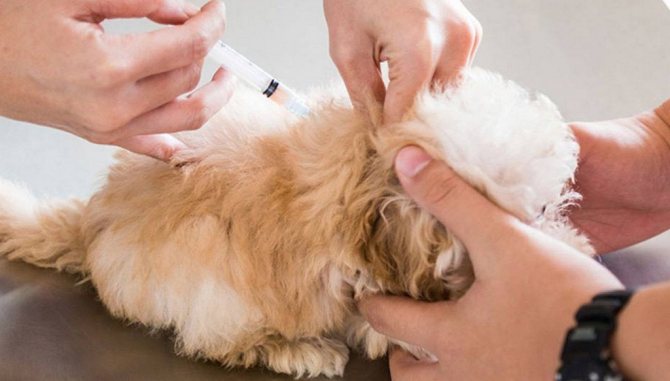
Where is the best place to vaccinate?
Many owners try to vaccinate their pet at home. On the one hand, the dog feels more confident, which has a positive effect on its health and ability to tolerate vaccination. However, there is a danger that the animal’s condition may sharply worsen, for example, due to an allergic reaction, anaphylactic shock, and then emergency veterinary care will be required.
It is best to bring your pet to the clinic, undergo a preliminary examination, get a vaccine and wait a while. You can walk around the clinic or sit in the car. After making sure that everything is in order with the body’s response, you can go home.
Any owner wants to see their pet healthy and cheerful. The key to such a dog’s condition is timely vaccination.
How to care for your dog after vaccination
Mandatory actions of the owner after vaccination:
- Provide your pet with a quiet place to rest because... he will experience a loss of strength and apathy.
- Wait about 2 hours. If signs of an allergic reaction do not appear, then the dog should be left with a bowl of water and not disturbed. If an allergy occurs, you should call your veterinarian and get further instructions. There is no need to relieve symptoms with antihistamines without consulting a doctor.
- The discomfort will last for a couple of days. If you see that your dog is getting worse, call your doctor.
If everything is normal, then the pet will eat as usual. But his walks must be limited for 14 days. While the body fights infection and develops immunity, the dog will be vulnerable to infection and may become ill.
Important! Vaccinations for representatives of breeds obtained through intensive selection are more important than for others, due to their lack of stable natural immunity.
The period between one vaccine and another depends on the age of your dog. For puppies, this is a minimum of 14 days, and for adults it can be the same or less. Remember that each animal and its reactions are individual. Therefore, pay attention to how well your pet tolerated the previous vaccine and whether he is ready for the next one.
Possible reactions to vaccination
Despite the safety of modern vaccines, after a rabies vaccination, a dog may experience slight discomfort for the next 3 days - it becomes less active, loses interest in food, and may develop a fever. Swelling may also occur at the injection site, which will subside within a month.
There is no need to be afraid of such symptoms - this is an absolutely normal reaction of the body that goes away without any intervention. If for some reason this process is delayed, urgently take your pet to an appointment with a veterinarian.
Types of injections
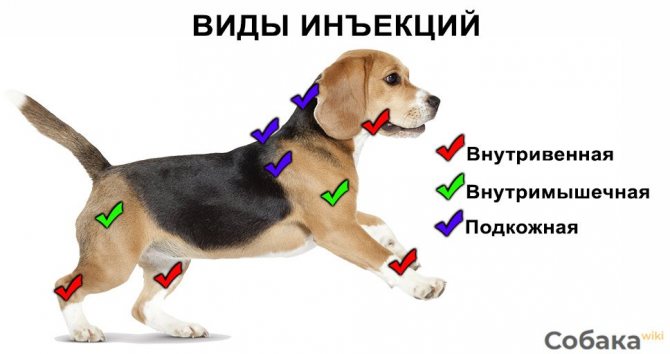
There are different types of injections:
- Subcutaneous . Most often in the withers area, but it can also be in the knee fold and any other area. Subcutaneous administration of the drug is often less painful for the animal. Therefore, if the medicine according to the instructions is permissible to administer in this way, then it is chosen.
If intravenous drips are not available, a large volume of saline can be administered subcutaneously; the liquid is quickly distributed throughout the tissues.
- Intramuscular . The injection is given in the shoulder or thigh area. In the second case, you need to be careful, there is a possibility of hitting the sciatic nerve, then the dog may limp on its paw for several days. Most often, an injection into the muscle is given to administer antibiotics if it is not possible to administer them orally (by mouth).
- Intravenous . The owner will be able to do this procedure on his own if there is a special catheter in the paw for quick access to the vein. This flexible plastic tube is located in a vessel, with a special port attached to the outside of the skin with a plaster. By opening its lid, you can insert a syringe without a needle or connect an IV system and inject the required drug. The advantage is that the medicine immediately enters the bloodstream and the therapeutic effect occurs faster.
- Intra-articular . It is carried out only by a veterinarian if the dog has arthritis and other joint diseases.
- Intraosseous . Applicable when a very small puppy is in serious condition and intravenous access cannot be provided in any way. Intraosseous administration of drugs is permissible only in a veterinary clinic.
How to give an injection in the withers (subcutaneous)
Every owner should know how to give a subcutaneous injection. Situations are different, so you should have a first aid kit for your dog at home, as well as the phone number of a doctor or clinic.
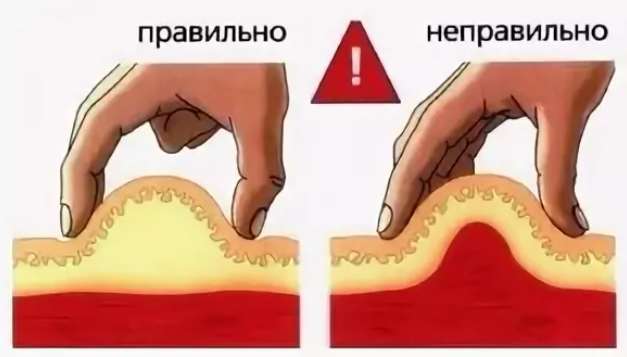
In order to introduce the drug, you need to slightly pull the skin in the area between the shoulder blades with two fingers. 45 degree angle . The depth of insertion depends on the size of the playing dog, on average 1-2 cm . The injection is given slowly, then the needle is removed.

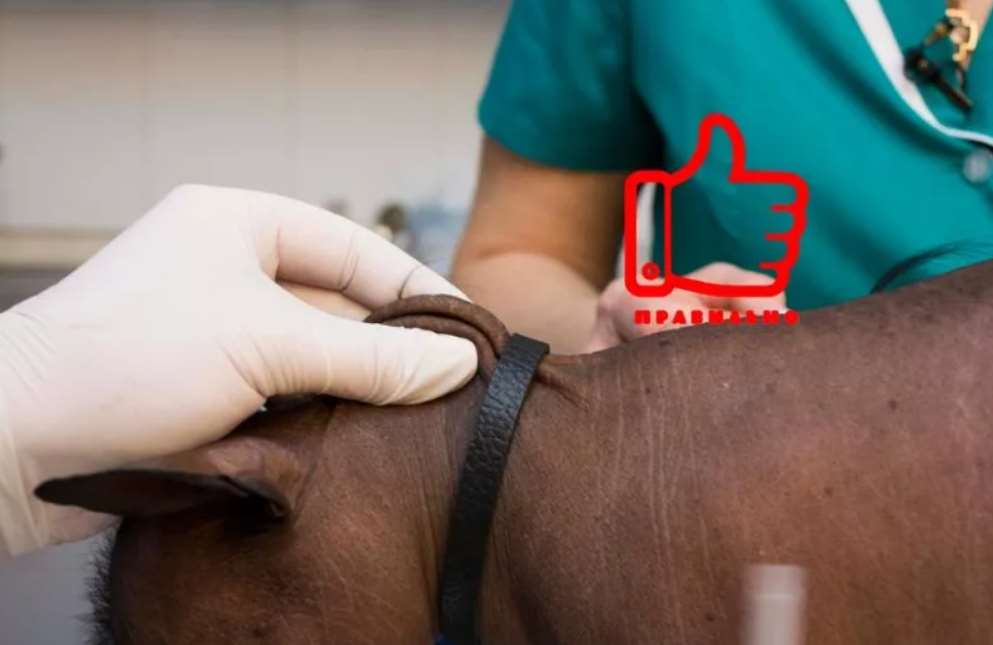
Video instruction
How to give an intramuscular injection
To give an intramuscular injection in the thigh, you need the dog to be slightly relaxed.
Find the softest spot on the paw, insert the needle at an angle of 90 degrees 1-2 cm deep and slowly release the solution. Afterwards, you can lightly massage your paw. If you insert the needle too deep, you may hit bone or the sciatic nerve. In this case, there is nothing terrible, but the dog may limp for several days and experience discomfort. In this case, next time you need to inject into the other limb.

Injecting a dog in the thigh - diagram
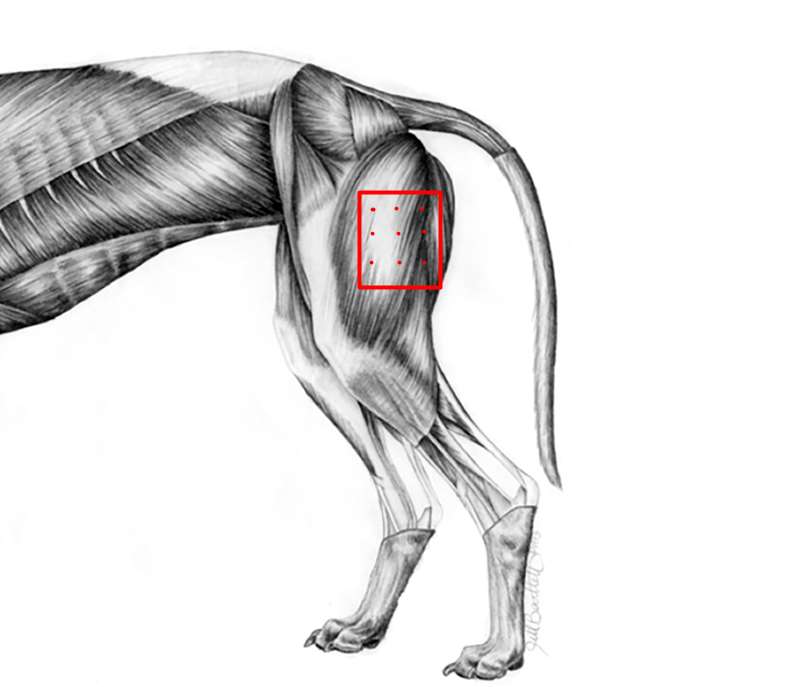
Video instruction
Intravenous
Intravenous administration of solutions is performed in a veterinary clinic . If there is a need for a one-time procedure, the doctor or assistant uses a butterfly needle with a long tube so that if the dog twitches, it does not injure the vein. If lengthy procedures are necessary, an intravenous catheter is inserted into the paw.
It is attached with a plaster to the skin and wrapped on top with a self-fixing bandage so that the dog does not chew it off. The owner can use the catheter at home independently. Unwind the bandage and open the catheter cover. Rinse it by inserting a syringe with saline solution of sodium chloride 0.9%, and only then inject the medicine or put in a dropper.
Important points:
- We use the catheter only with clean hands;
- If blood gets on the skin, bandage or fur around it, it should be removed with a napkin with hydrogen peroxide;
- To administer the medicine, the paw must be straightened as much as possible;
- We rinse the catheter before and after the procedure with saline solution;
- If the animal is worried, a lump and pain have formed above the catheter, then stop administering the medications and consult a doctor;
- The catheter can remain in the paw for up to 5 days, then, if it is necessary to continue the procedures, it must be replaced;
- It is better not to remove it yourself or to do it very carefully: unwind the patch, remove the catheter, press cotton wool to the injection site and hold for 10-15 minutes.
Intra-articular
Intra-articular injection is most often carried out under the control of an ultrasonic sensor to ensure that the needle enters exactly into the joint space. The dog must be well restrained as the procedure is painful and is sometimes performed under sedation. The advantage is that the injection does not need to be done every day.

When should you visit the clinic?
Vaccination against rabies is a drug that has a serious effect on the animal’s body. There is no need to be afraid if your dog loses its appetite for a certain period of time, develops diarrhea, or has a slight increase in body temperature. It is necessary to carefully observe the animal for some time so as not to miss the appearance of secondary reactions.
For three days after vaccination, the dog will be a little lethargic. This is a completely normal response of the body. But you should remember about certain options when emergency veterinary help is needed. Let's look at the main features:
- when symptoms last more than three days after vaccination;
- the area where the drug was administered turned red, swollen, or the animal exhibited unhealthy sensations in this area;
- if the dog begins to whine and tries to crawl out of the injection area or scratches;
- if the color of the tongue or ears has changed;
- coughing, difficulty breathing, or sneezing;
- muscle twitching;
- a very significant increase in t to 39.5;
- excessive saliva production;
- discharge from the nose, eyes;
- repeated vomiting.
Similar reactions to rabies vaccination can occur when the procedure is carried out with low-quality drugs or errors are made when administering the solution. However, if everything is done according to the instructions and by a competent veterinarian, there will be no problems. However, if your dog develops a serious reaction to the vaccine, you may need veterinary attention.
Rabies is considered a serious viral disease that can affect both animals and be transmitted to humans. The virus enters the body through saliva, most often after the bite of an infected animal. Previously, such a terrible disease posed a significant threat to people, but today the problem can be combated with the help of a mandatory vaccine. The procedure is considered safe and does not harm the health of your animal.
Currently reading:
- Primary and important symptoms of rabies in dogs
- Basic vaccinations for dogs by age in the table
- Nobivak line of drugs for dog rabies
- Seven Signs and Remedies for Getting Rid of Fleas in Dogs
Preparing your pet for drug administration
Some animals hardly notice the injection, others behave restlessly or aggressively. In this case, it is worth calming the pet with conversation and stroking. In some cases, it is better to use a muzzle or a special restraint bag for miniature breeds.
Let your pet get used to the syringe. Fill it with a dose of medicine and give it a sniff. Be careful that the animal does not injure itself with the needle, keep the cap closed. You may not be able to smell the liquid, but trust me, your dog can!
Once you are sure that your pet is calm, it is time to give the injection.
If your dog has had injections before, he probably associates syringes with pain and discomfort. To combat this, give treats and use other forms of positive reinforcement such as praise and games.

First and second vaccinations for puppies up to one year: scheme, price, when can they go for walks and other questions
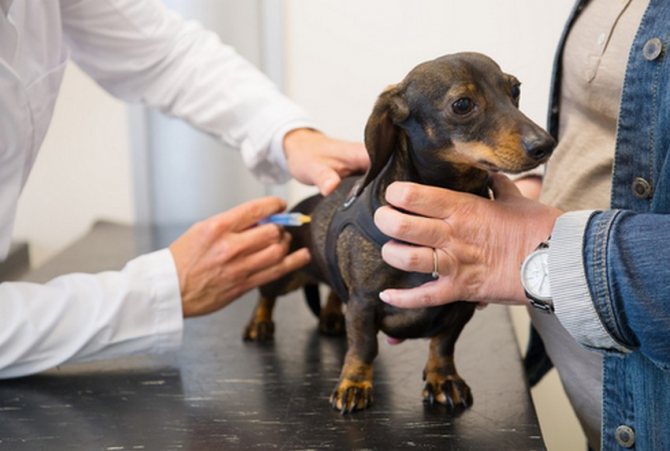
Attention! Due to the coronavirus epidemic, there are now interruptions in the import of vaccines to Russia. The Constellation veterinary center has all the necessary vaccines: Eurikan DHPPi2-L, Eurikan DHPPi2-LR, Nobivak DHPPi / R and others
Immediately after the puppy arrives at your home, we recommend contacting a veterinary clinic to evaluate its health. It does not matter whether the puppy was purchased from a breeder, taken from friends or from a shelter. Only a veterinarian will be able to see hidden signs of the disease.
During a visit to the veterinary clinic, the doctor will learn more about your pet and select the most optimal vaccination schedule specifically for your puppy.
Be careful if you adopt a puppy that has not completed its primary vaccination course (that is, younger than 3 months). Remember that your puppy will not be fully protected until the primer vaccination is completed correctly.
What you need to know about puppy vaccinations?
For comprehensive vaccination of a puppy, you need to schedule 2-3 visits to the veterinary clinic with an interval of 3-4 weeks. If you miss or do not follow your vaccination schedule, you may need an additional vaccination to ensure full immunity is achieved.
It is impossible to shorten the interval between vaccinations; this will lead to the formation of a shorter and more intense immunity.
At what age are puppies vaccinated?
The first vaccinations for a puppy can begin at 6 weeks. At 7-8 weeks at least one vaccination should have already been carried out.
Puppy's first vaccination (optional, in the kennel)
The first vaccination for a puppy is usually carried out at 6 weeks while still in the kennel. This vaccination is not mandatory; it is given in nurseries to protect small puppies from parvovirus enteritis.
To vaccinate puppies at 6 weeks, use the Eurican Primo or Nobivak Pappy vaccines.
Second puppy vaccination (mandatory)
At 7-8 weeks, a second vaccination is carried out with a complex vaccine. This vaccination is aimed at protecting against parvovirus enteritis, plague, adenovirosis (infectious laryngotracheitis and infectious hepatitis), parainfluenza and leptospirosis. This vaccination may be the first one if the puppy was not vaccinated against parvovirus enteritis at the kennel at 6 weeks.
Third vaccination for puppy (mandatory)
At 12 weeks the third vaccination is carried out. A complex vaccine from the same manufacturer is used that was used during the second vaccination against the same diseases, but with the addition of an anti-rabies component.
Puppy's fourth vaccination (optional)
In rare cases (less than 5% of puppies), if immunity has not developed after vaccinations at 2 and 3 months, additional vaccination may be required at 16 weeks (4 months). The vaccine from the same manufacturer is used as at 2-3 months.
What vaccines are used to protect puppies?
We recommend using Eurikan, Rabizin and Nobivak vaccines for vaccination of puppies and adult dogs.
When can a puppy start going for walks after vaccination?
You've probably heard that the puppy needs to be kept at home to prevent a post-vaccination effect. The main question is how many days after vaccination can you walk your puppy? Different puppies develop immunity to different vaccines at different times. If everything is done correctly, then full protection against all diseases is formed 2 weeks after vaccination at 3 months (for components other than leptospirosis and rabies even earlier - usually 1 week after vaccination at 3 months). But this does not mean that you cannot walk your puppy until 14 weeks. Early puppy socialization is extremely important.
You can start walking puppies from 10 weeks, taking maximum precautions:
Is it possible to let a puppy out into the courtyard of the house?
If you live in a private house, the yard is fenced and has sufficient sunlight, then the risk of infection is minimal and you can walk the puppy.
Why do puppies need quarantine for the first 2 weeks after vaccination at 3 months?
Despite the fact that immunity against most diseases develops faster, protection against leptospirosis and rabies, diseases dangerous for dogs and people, appears only 14 weeks after the course of primary vaccination.
What is the difference between the vaccination schedule for Yorkies, German Shepherds, Labradors, Spitz and other dog breeds?
There is no difference in the vaccination schedule, the diseases for which vaccination is carried out and the doses of vaccines administered. Breed makes no difference when choosing a vaccine.
Independent changes in the vaccination schedule, vaccine volume, vaccine components can lead to low post-vaccination immunity! Remember, puppies are the most vulnerable to infectious diseases!
Do puppies of decorative dog breeds (Yorkies, Toys, Spitz and others) need to be given half a dose of the vaccine?
No. The effectiveness and safety of vaccines has been tested on different breeds. The vaccine cannot be divided. A Yorkie or Spitz puppy does not need to be given half a dose, just as an Irish Dog, for example, does not need to be given 2 doses of vaccine at the same time. Administration of a half-dose of the vaccine can lead to insufficient immunity in the puppy!
Deworming puppies before vaccination
It is extremely important to deworm puppies regularly as they are the most susceptible to heartworm infections. 2 weeks before vaccination, it is necessary to carry out deworming if you have not followed the recommended regimen for treating the puppy against worms.
How much do puppy vaccinations cost?
The price of puppy vaccination consists of the cost of the vaccine and the cost of a doctor’s appointment, including examination of the animal and consultation with the owner. Prices for vaccination of puppies.
Vaccination schedule for puppies up to one year old (table)
Below is the classic vaccination schedule for puppies up to one year old. Vaccinations at 6 and 16 weeks are NOT mandatory and are required in individual cases. The vaccination schedule for puppies is determined individually for each puppy!
| 6 weeks | 8 weeks | 12 weeks | 16 weeks | 12 months | |
| Plague | X | X | X | X | |
| Parvovirus enteritis | X | X | X | X | X |
| Infectious hepatatitis and laryngotracheitis | X | X | X | X | |
| Parainfluenza | X | X | X | ||
| Leptospirosis | X | X | X | ||
| Rabies | X | X |
After vaccination at 12 months, dogs must be vaccinated annually.
In addition to the above diseases, there are vaccines to protect puppies against other diseases.
Canine herpes virus
To protect dogs from the herpes virus, Eurican Herpes is used. Puppy bitches are vaccinated twice every whelping.
Canine coronavirus
Canine coronavirus, unlike parvovirus, is not a serious disease and is easily transmitted by dogs. The International Association of Veterinary Doctors does not recommend vaccinating dogs against coronavirus infection, since no serious evidence has been provided regarding the effectiveness of these vaccines.
Piroplasmosis / babesiosis of dogs
To protect against piroplasmosis, dogs are vaccinated with Eurican Piro. The vaccination schedule for puppies consists of two vaccinations: at 5 and 6 months of age, then vaccination is carried out annually.
